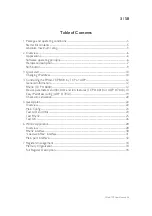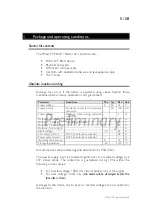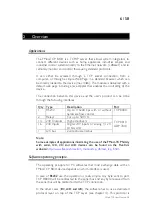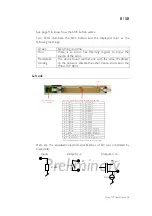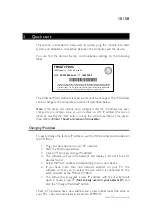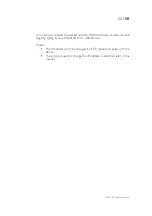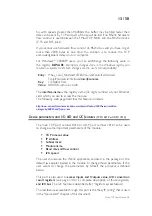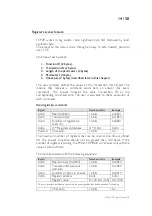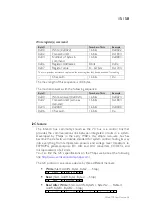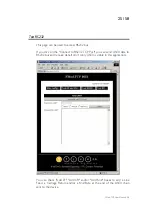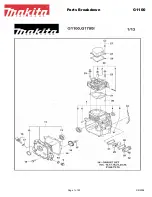
12 / 58
4
Controlling the FMod-TCP BOX by TCP or UDP
General Information
All the device's parameters (configuration registers) and features can be
accessed through a TCP or UDP port.
In addition, an HTTP-TCP port is available for web pages downloading and
another TCP port for RS232 bus access.
Those ports are:
TCP Port
#80
for HTTP communication.
TCP Port
#8000
for RS232 transceiver.
TCP Port
#8010
to access I/O registers (see chapter 7) and I2C bus.
UDP Port
#7010
to access I/O registers (see chapter 7) and I2C bus.
With regards to TCP connections, the device allows up to
4 simultaneous
connections
.
These ports are described below.
RS232
(TCP # 8000
)
The RS232 bus of the microcontroller is accessible through the TCP port
number 8000. The module acts simply as a transceiver for this port. Any
byte sent from the network (ex: TCP-IP from a PC) to the module will be
sent to the other side’s RS232 bus, and vice versa. Thus there is no particular
protocol dedicated to this feature. See later chapters to know how to
change parameters such as baud rate and hardware flow control.
Note:
This port supports only one user at a time.
RS232 fixed settings:
No parity / 1 Start Bit / 8 Data Bits / 1 Stop Bit
Important note about baud rate greater than 9600bds:
Common TCP/IP stacks (on PC, Unix station …) use a delay of 200ms for
the acknowledgement of the TCP received data packets. This is done to
reduce traffic on the network because TCP allows the acknowledgement of
several packets at one time.
Unfortunately, the FMod-TCP BOX device needs this acknowledgement to
remove the data from its internal RS232 receive buffer (if no acknowledge is
received from the PC, the module will resend those data).
FMod-TCP User Manual v.2.8



